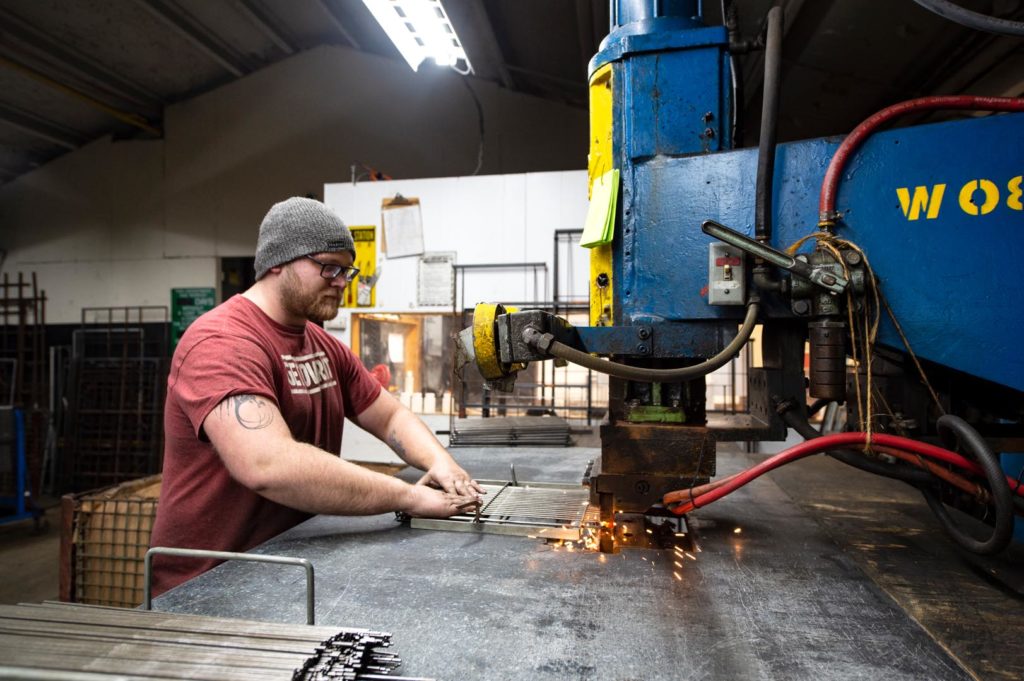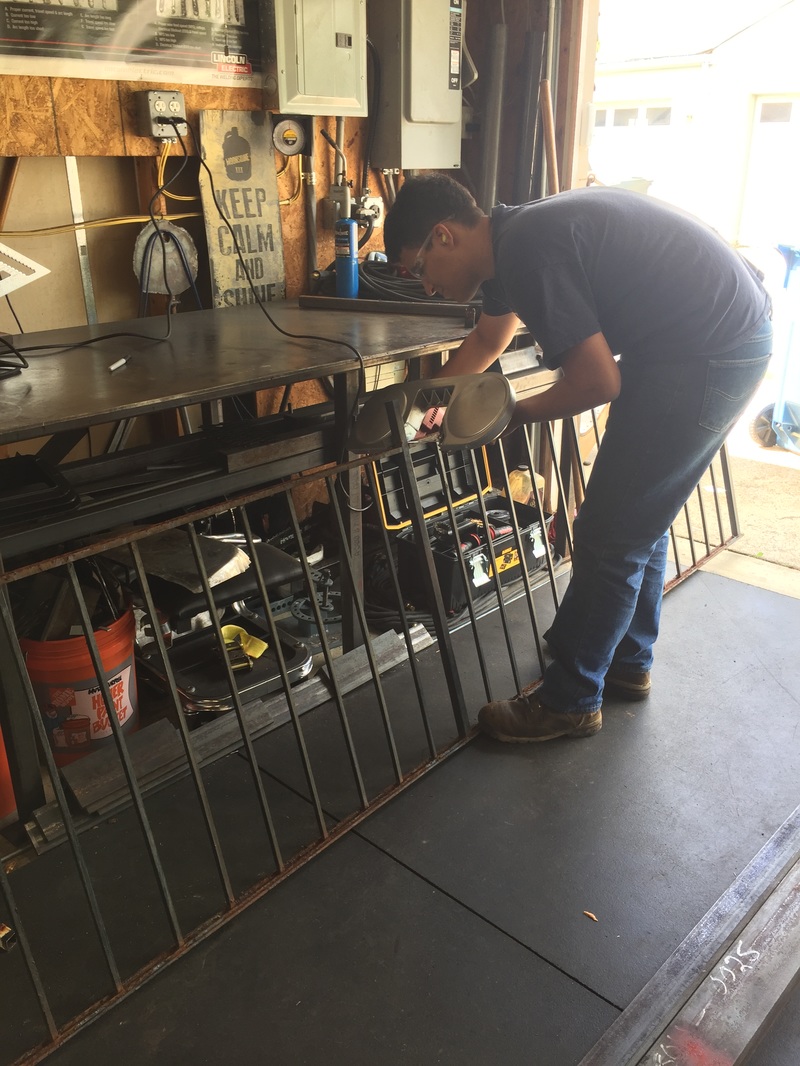Typical Welding Repair Service Issues and Exactly How to Address Them Successfully
Welding repair services frequently come across a series of problems that can endanger the honesty of the end product. Typical problems include inadequate infiltration, porosity, and imbalance, to name a few. Each issue presents one-of-a-kind challenges that need particular methods for resolution. Understanding these concerns is important for welders aiming to improve their results and skills. This discussion will certainly discover these usual welding fixing concerns and efficient techniques to address them.
Insufficient Infiltration
Poor infiltration occurs when the weld steel stops working to completely fuse with the base material, leading to weak joints and potential architectural failures. This issue frequently stems from inadequate warm input, incorrect electrode angle, or improper welding speed. Welders might encounter insufficient infiltration due to a miscalculation of the required criteria for a certain material thickness or type. Additionally, contamination on the base material's surface can hinder reliable bonding, intensifying the trouble. To deal with inadequate infiltration, welders must ensure suitable settings on their equipment and maintain a tidy job surface area. Regular evaluation of welds is suggested to determine any kind of shortages early, enabling prompt adjustments and the prevention of endangered architectural stability in bonded assemblies.
Porosity
Porosity is an usual issue in welded joints that manifests as small gas bubbles trapped within the weld steel. This issue can compromise the stability of the weld, causing decreased strength and potential failure under stress and anxiety. Belgrade Welding. Porosity generally develops from contamination, wetness, or inappropriate welding strategies, which permit gases to run away into the molten weld pool. To deal with porosity, welders should assure appropriate surface area prep work, maintain a clean workplace, and utilize suitable welding parameters. In addition, selecting the appropriate filler product and shielding gas can mitigate gas entrapment. Regular evaluation and testing of welds can help recognize porosity early, assuring prompt corrective actions are taken, consequently preserving the high quality and dependability of the bonded structure
Imbalance
Misalignment in welding can arise from various factors, including incorrect arrangement and thermal development. Understanding the origin creates is crucial for reliable resolution. A number of correction techniques are offered to realign elements and ensure architectural integrity.
Sources of Imbalance
Welding misalignment frequently originates from a range of underlying issues that can jeopardize architectural integrity. One primary cause is improper fit-up of parts before welding, which can bring about spaces and uneven surface areas. Variations in thermal development throughout the welding procedure can additionally cause distortion, particularly if the products being signed up with have different coefficients of expansion. In addition, inadequate fixturing and clamping may fail to hold elements securely in location, resulting in movement during welding. Inadequately maintained tools, including welding makers and tools, may present variances in the weld bead, more adding to imbalance. Ultimately, operator error, coming from inadequate training or experience, can likewise play a substantial duty in producing misaligned welds.
Improvement Strategies Available
Addressing misalignment successfully requires a mix of restorative methods tailored to the particular concerns handy. One common technique is using jigs or components to hold parts in the appropriate placement throughout welding, making certain constant alignment. Additionally, pre-heating the materials can help in reducing distortion and improve fit-up. For considerable misalignment, mechanical realignment methods, such as utilizing hydraulic jacks or clamps, can be utilized to deal with the position prior to welding. Post-weld heat therapy may likewise be required to soothe stress and anxieties brought on by misalignment. Ultimately, mindful assessment and change during the arrangement stage can prevent imbalance concerns from ending up being considerable issues, advertising a smoother welding process and improving total structural stability.
Distortion
Distortion is a common difficulty in welding that can arise from various elements, including uneven cooling and heating. Comprehending the reasons for distortion is crucial for carrying out effective prevention strategies. Resolving this issue not just boosts architectural integrity but also improves the overall quality of the weld.
Reasons for Distortion
When subjected to the intense warmth of welding, products frequently undergo modifications that can bring about distortion. This phenomenon largely develops from thermal growth and tightening during the welding procedure. As the weld area warms up, the product expands; upon cooling, it gets, which can develop internal stresses. On top of that, irregular home heating throughout a workpiece can worsen these stresses, causing warping or bending. The sort of material also plays a significant function; metals with varying thermal conductivity and coefficients of expansion might react differently, causing uncertain distortions. Poor joint design and inadequate fixturing can contribute to imbalance throughout welding, boosting the likelihood of distortion. Recognizing these reasons is important for efficient welding repair work and prevention approaches.
Prevention Techniques
Effective prevention strategies for distortion throughout welding concentrate on regulating warm input and making sure appropriate joint style. Preserving a consistent warm input aids to reduce thermal growth and tightening, which can lead to distortion. Making use of strategies such as pre-heating the work surface can also reduce the temperature gradient, advertising consistent heating. Furthermore, choosing proper joint layouts, such as T-joints or lap joints, can boost stability and reduce anxiety focus. Executing correct fixturing to secure the workpieces in position even more aids in maintaining alignment during the welding procedure. Lastly, staggered welding series can distribute warm extra equally, protecting against local distortion. By using these methods, welders can considerably decrease the possibility of distortion and enhance the total quality of their welds.
Breaking
Cracking is a typical problem encountered in welding repairs, commonly arising from numerous variables such as inappropriate cooling prices, material choice, or inadequate joint prep work. The incident of fractures can significantly jeopardize the honesty of the weld, leading to possible failures throughout operation. To resolve this issue, welders should initially assess the source, making sure that products work and appropriately picked for the specific application. In addition, managing the cooling rate during the welding procedure is essential; rapid cooling can induce stress and anxiety and cause fracturing. Correct joint layout and preparation likewise add to reducing the risk. Executing these approaches can improve weld top quality and resilience, ultimately decreasing the likelihood of cracking in ended up weldments.

Incomplete Fusion
A significant concern in welding repair work is incomplete combination, which occurs when the weld steel does not adequately bond with the base material or my link previous weld passes - Montana Mobile Welding and Repair Belgrade Welding. This problem can lead to weak points in the joint, potentially jeopardizing the honesty of the welded structure. Variables adding to incomplete combination consist of insufficient warm input, inappropriate welding method, and contamination of the surface areas being signed up with. To resolve this concern successfully, welders should ensure proper pre-weld cleansing and surface area preparation, in addition to adjust their welding criteria to achieve sufficient infiltration and combination. Routine assessment throughout the welding procedure can additionally assist recognize incomplete blend early, enabling for Going Here timely rehabilitative procedures to enhance the general quality of the weld
Overheating
While welding fixings can boost architectural stability, overheating presents a considerable challenge that can cause product deterioration. Too much warmth throughout welding can change the mechanical homes of metals, leading to lowered stamina, enhanced brittleness, and bending. This sensation is specifically important in high-stress applications where architectural reliability is extremely important. Identifying getting too hot can include visual evaluations for staining or distortion, in addition to monitoring temperature throughout the welding procedure. To mitigate the risks linked with getting too hot, welders ought to utilize ideal strategies, such as regulating heat input, adjusting travel speed, and making use of appropriate filler products. Furthermore, applying pre- and post-weld warmth treatments can help recover material properties and boost the total top quality of the repair service, making certain long-lasting performance and safety.
Frequently Asked Inquiries
What Are the Usual Indications of a Welding Problem?

Exactly How Can I Test My Welds for Top quality?
To test welds for top quality, one can utilize aesthetic inspections, ultrasonic testing, and radiographic approaches. Each method assures architectural integrity, identifies flaws, and confirms adherence to specified criteria, ultimately boosting the reliability of the bonded joints.
What Safety and security Preventative Measures Should I Take While Welding?
When welding, one must focus on safety and security by using ideal individual safety tools, making sure appropriate ventilation, protecting flammable products away, maintaining a clean office, and knowing environments to avoid injuries and crashes.
Can I Fix a Weld Without Remodeling the Entire Joint?
Repairing a weld without remodeling the whole joint is feasible, relying on the damage (Fabrication). Methods such as grinding, including filler material, or utilizing a welding process can effectively address specific problems while maintaining the bordering framework
What Equipment Are Vital for Efficient Welding Fixes?
Crucial tools for reliable welding repairs include a welding equipment, cable brush, grinder, protective equipment, clamps, and filler materials. Each device plays an essential duty in making sure top quality and safety throughout the repair procedure. Porosity normally occurs from contamination, dampness, or inappropriate welding methods, which allow gases to escape into the liquified weld swimming pool. Inadequately conserved tools, consisting of welding devices and tools, might introduce incongruities in the weld grain, additional adding to misalignment. When subjected to the intense heat of welding, materials frequently undertake adjustments that can lead to distortion. Breaking is a typical problem run into in welding repairs, commonly resulting from different variables such as incorrect cooling prices, material selection, or poor joint welding at home preparation. A considerable issue in welding fixings is incomplete fusion, which takes place when the weld metal does not effectively bond with the base material or previous weld passes.